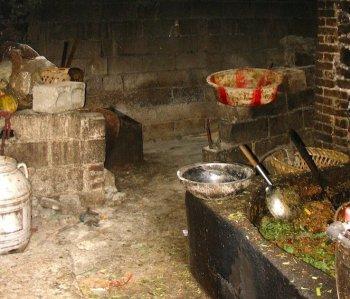Children living in the suburbs of Shanghai have been diagnosed with lead poisoning. In the most seriously affected village, close to 100 children were poisoned and the number is increasing.
The National Audit Office of China recently released a report saying that at least 13 work units had misappropriated over 1.5 billion yuan (US$23.5 million) of the funds slated for waste water treatment. The report said the money was used for loans and stock investments.
School age children living in the Kanghuaxin Village of Kangqiao Township in Pudong District of Shanghai have a routine medical checkup at the beginning of each school year. This year, the majority of the children were found to have elevated levels of lead in their blood. Eight children had such toxic levels that they were sent to a hospital for medical treatment. On Sept. 15, two more children were hospitalized.
Mr. Lu, a resident of Kanghuaxin Village, told Radio Free Asia (RFA) that residents suspect a nearby battery manufacturer has been releasing toxic fumes for a long time.
“Every day they roast the lead ore. The resulting ash forms a foul smelling thick white smoke that pours out of the chimneys. The lead ash has also polluted our drinking water. We have reported the situation to the government, but the response was that the manufacturer has a permit to dump wastes, and it’s unclear whether its practices are breaking the law,” he said.
Mr. Lu told RFA, “We do not think the government will investigate our complaints. When the news first broke, many local and international journalists asked for permission to interview the town residents; but government officials denied the requests.”
A nearby battery plant operated by the U.S.-based Johnson Controls, the Shanghai Xinming Auto Accessory Co., and a waste incinerator have already halted operations. The battery plant denies that lead pollution was the reason for its closure.
In recent years lead poisoning related to lead-acid battery plants has been reported in many provinces including Shaanxi, Sichuan, Anhui, Guangzhou and Zhejiang. The latest instance, in Shanghai’s Kangqiao Township, generated much fear and worry among residents.
Shanghai resident Mr. Zhang told RFA, “We are not talking about just Kangqiao, all of Shanghai is not safe [to live]. Where can we find clean air, clean water, or clean food?”
On Sept. 17, the National Audit Office published a report on the 2010 waste water treatment funding in nine cities and provinces (Tianjin, Shanghai, Zhejiang Province, Hubei Province, Guangdong Province, Chongqing City, Yunnan Province, Shenzhen City, and Chengdu City). The audit discovered 14 projects received 3.96 billion yuan that wasn’t used for waste water treatment. Moreover, 13 work units were found to have spent over 1.5 billion yuan (US$23.5 million) for stock investments and loans.
The National Audit Office said that by the end of 2010, 114 out of the 206 randomly audited projects did not finish on time, which means that 55.34 percent of the waste water projects were unfinished.
[email protected]


Friends Read Free